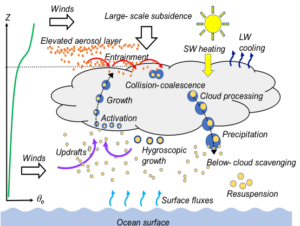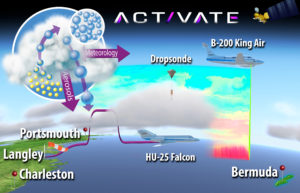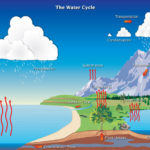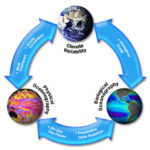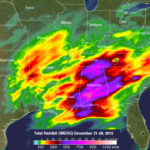Space Grant Intern, Annalisa Minke, Goes to NASA Langley!
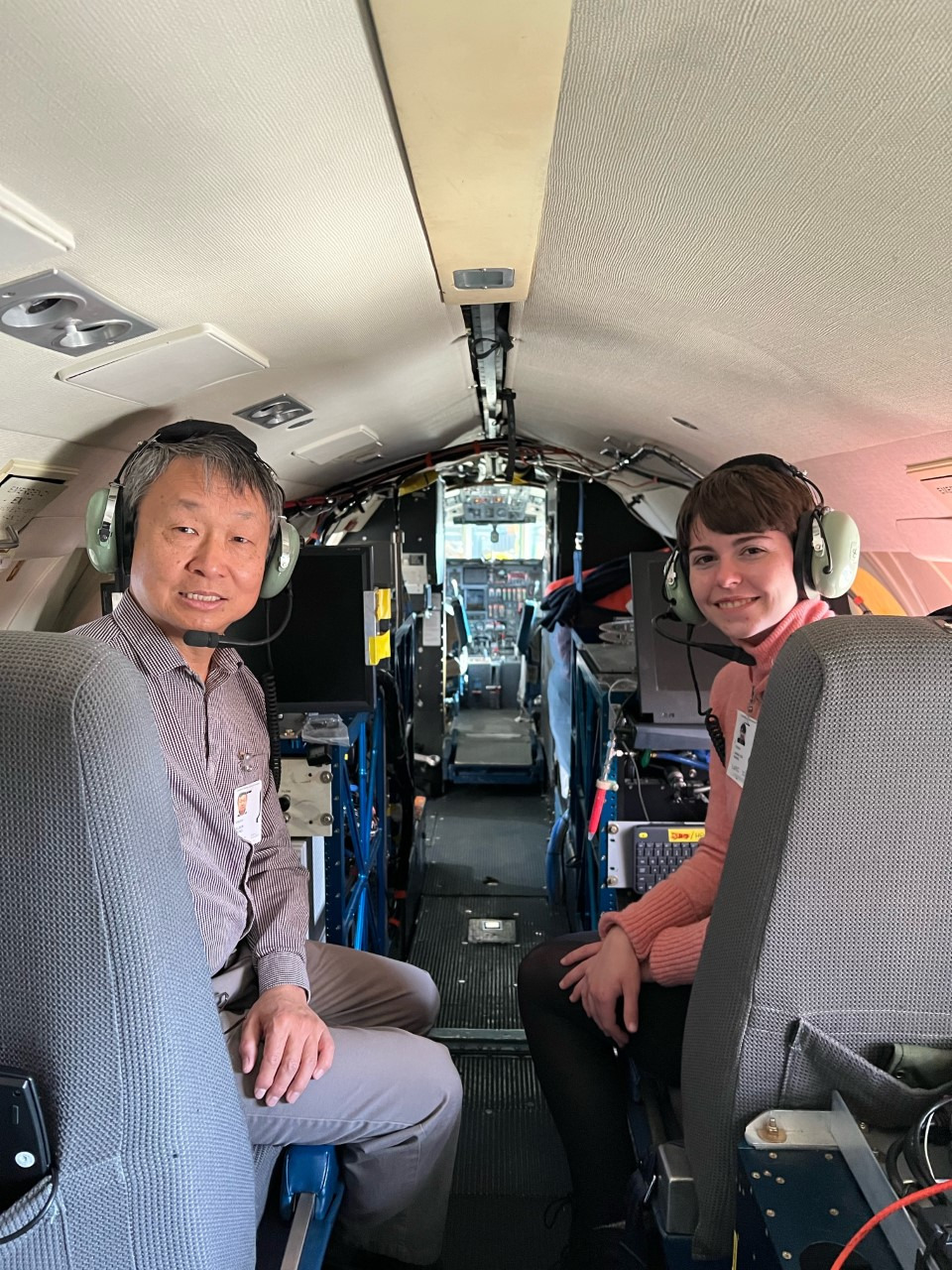
What is ACTIVATE?
NASA’s Aerosol Cloud meTeorology Interactions oVer the western ATlantic Experiment (ACTIVATE) project is a five-year (January 2019 – December 2023) airborne campaign funded by NASA’s Science Mission Directorate through the Earth Venture Suborbital Program. ACTIVATE is led by Armin Sorooshian (The University of Arizona) in partnership with NASA’s Langley Research Center.
ACTIVATE science focuses on robustly characterizing the interactions between aerosols, clouds and the surrounding meteorological conditions of marine boundary layer (MBL) clouds that play a critical role in the planet’s energy balance. To perform these measurements, ACTIVATE deploys an advanced suite of both in situ and remote sensing instruments on multiple aircraft that measure macrophysical and microphysical properties of clouds and aerosols.
ACTIVATE has four fundamental science goals:
1) Improved understanding and model representations of relationships between number concentrations of aerosol (Na), cloud condensation nuclei (CCN), and cloud droplets (Nd) and the relationships between cloud micro/macro-physical properties;
2) A unique dataset for international model intercomparison and process-based studies;
3) An evaluation of current remote sensing retrievals and prototypes for future satellite missions; and
4) The development of improved satellite-based Nd retrievals and CCN proxies.
The primary instruments planned for ACTIVATE are:
- High Spectral Resolution Lidar-2 (HSRL-2)
- Research Scanning Polarimeter (RSP)
- Dropsondes
- Langley Aerosol Research Group Experiment (LARGE) aerosol optical and microphysics
- LARGE cloud probes and cloud water collection
- Diode Laser Hydrometer (DLH) water vapor
- Turbulent Air-Motion Measurement System (TAMMS) winds
The modeling tools planned for ACTIVATE are:
- Weather Research and Forecasting (WRF) model
- Distributed Hydrodynamic Aerosol and Radiative Modeling Application (DHARMA)
- FLEXible PARTicle (FLEXPART) dispersion model
- Goddard Earth Observing Model, version 5 (GEOS-5)
- Atmospheric chemistry model coupled with GEOS (GEOS-Chem)
- GISS GCM, version E3 (GISS-E3)
- Community Atmosphere Model, version 5 (CAM5)
- Energy Exascale Earth System Model (E3SM)
How will ACTIVATE advance our knowledge and understanding in:
- Atmospheric Composition: uniquely provides comprehensive measurements of aerosol and cloud properties
- Water & Energy Cycle: provides detailed measurements of clouds and cloud properties relevant to precipitation and radiation
- Climate Variability and Change: improves understanding and model parameterizations for estimating the impacts of aerosols on cloud properties and reduces uncertainties and known biases in climate model simulations of clouds, leading to a better understanding of climate variability and projection of climate change
- Weather: improves simulations of marine clouds, especially post-frontal clouds, and cold air outbreaks
Who will benefit from ACTIVATE data?
ACTIVATE’s observations of aerosols, meteorology, and clouds will be used by industry, universities, federal agencies, and scientists internationally to improve our understanding and ability to forecast weather and project climate change.



